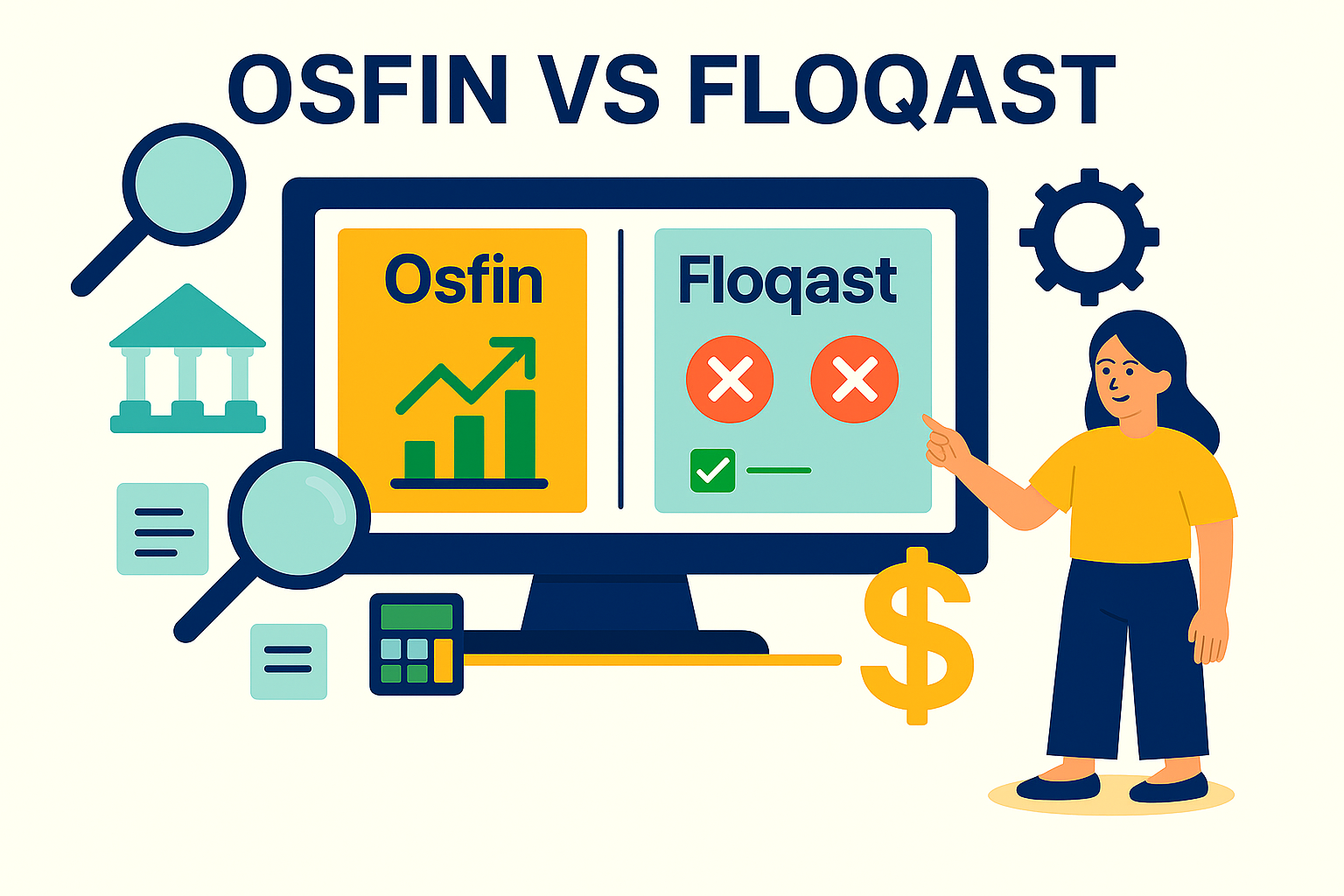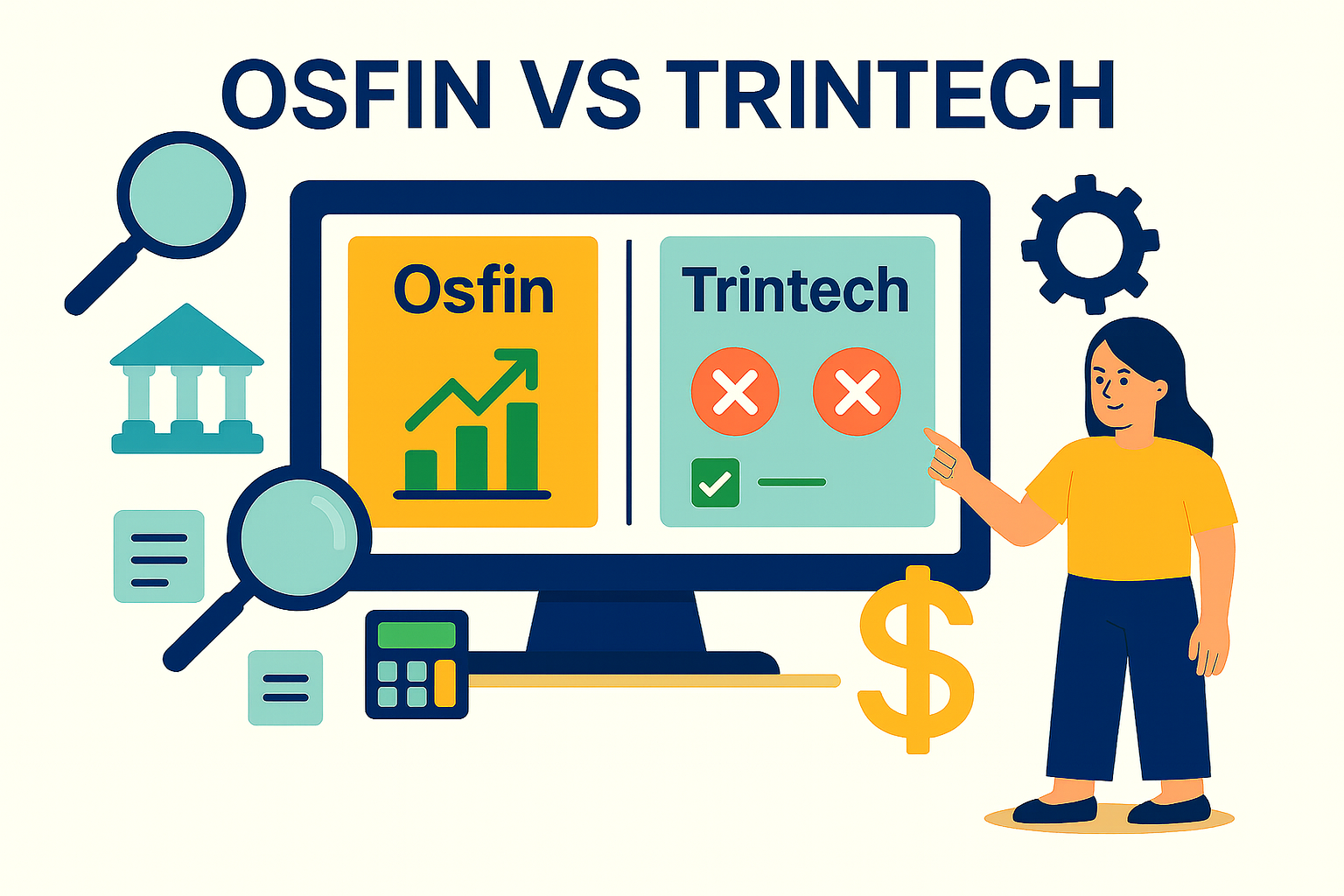SOX Testing: 4-Step Process and Critical Best Practices
What makes financial statements accurate and stakeholders confident? Good internal controls.Solid internal controls enable sound financial reporting, and SOX testing confirms that these controls are functioning correctly. Introduced in 2002 following debacles such as Enron and WorldCom, the Sarbanes-Oxley Act (SOX) was designed to prevent fraud and restore investor trust in companies. But SOX testing is no longer merely about compliance.Today, 67% of organizations say their SOX testing procedures shape how they plan new initiatives. The reason? When done right, a SOX test gives leadership confidence to make decisions, scale operations, and move forward without hidden risk. In this blog, we'll walk through SOX testing meaning, its four essential steps, and the best practices that help companies stay compliant, efficient, and audit-ready
What this blog covers:
- What SOX testing is and why it’s essential for compliance
- Key steps: planning, selecting controls, executing tests, and documenting results
- Common challenges: control design gaps, ineffective testing, documentation issues
- Best practices to improve SOX test efficiency and effectiveness
- How automation tools like Osfin support SOX testing and control monitoring
What Is SOX Testing?
SOX testing methodology refers to the practice of examining and validating that a company's internal controls over financial reporting (ICFR) are functioning correctly. With SOX testing guidance, you can avoid errors, fraud, and monetary misstatements.
Common areas of focus are:
- Financial reporting systems
- User access and security controls
- Transaction approvals
- Segregation of duties
- IT general controls (ITGCs)
Why SOX Testing Matters?
Complying with the Sarbanes-Oxley Act (SOX) is mandatory for public companies. If not, it can result in legal penalties and audit failures. But SOX testing guidance also delivers real business value, such as:
- Increased investor trust: A clean SOX audit report indicates to investors that your business is well-run and transparent.
- Streamlined operations: Testing identifies wasteful processes you didn't even know existed.
- Lesser risk: Good controls prevent fraud, data breaches, and accounting discrepancies.
- Preparing for IPO: If you're going public, SOX control testing is a requirement.
{{banner1}}
Objectives of SOX Testing
The most important goals that gives SOX testing meaning are:
- To verify control design: Is the control rational, and does it really mitigate the risk?
- To control operation test: Is the control working correctly in real time?
- To confirm correct financial numbers: Are reported numbers correctly and fully utilized?
- To assess risk coverage: Are the controls covering all of the significant financial reporting-related risks?
SOX Testing Process
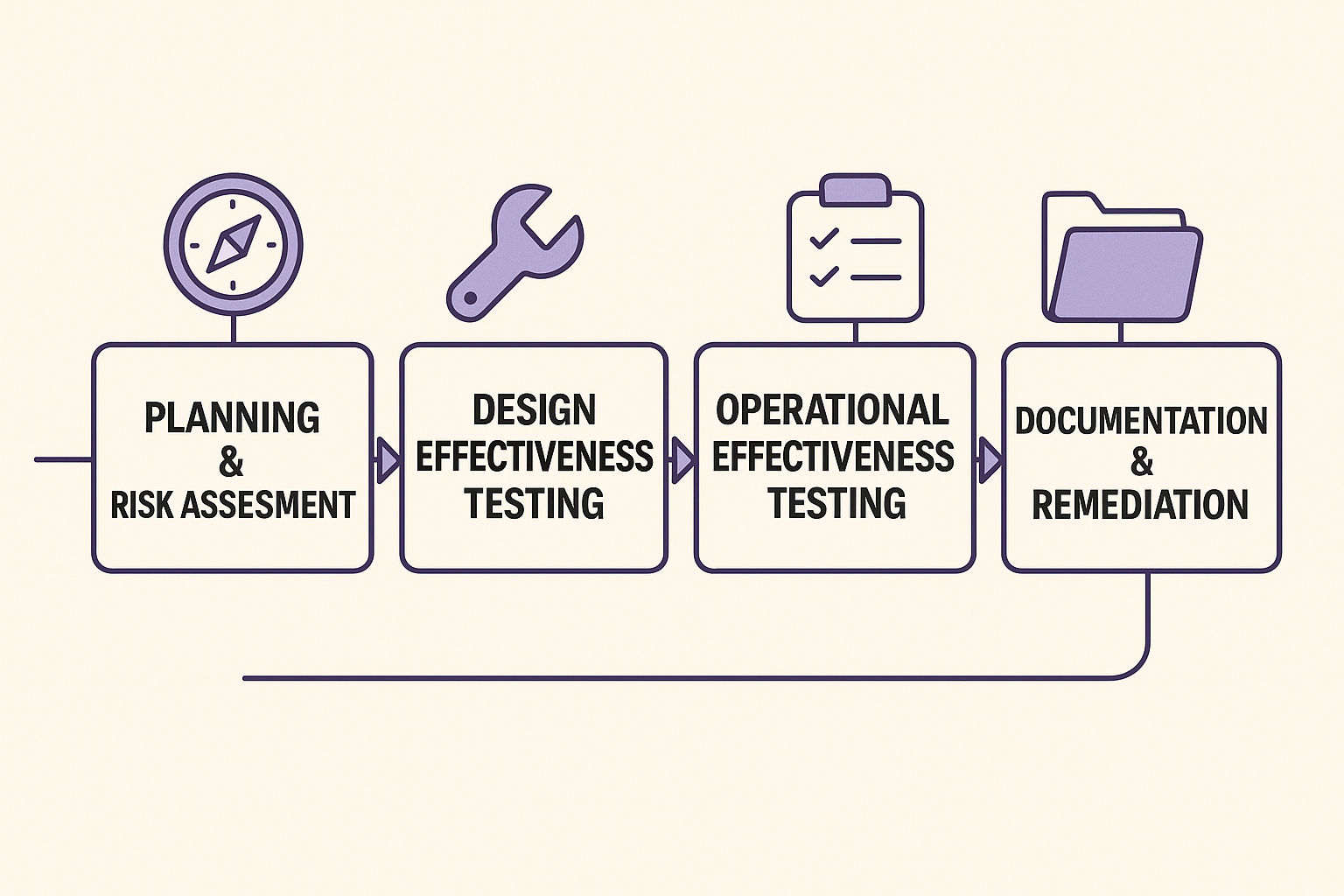
To ensure compliance and win trust on financial reporting, the SOX testing process typically follows these four key steps:
Step 1: Risk and Planning Assessment
Start by getting to know your reporting environment for finances. Find the processes and accounts that are most risky and concentrate your testing there.
- Conduct a risk assessment
- Determine key controls
- Set your scope and timing for testing
Step 2: Design Effectiveness Testing
This step tests whether the control, as designed, will prevent or detect errors if properly followed.
- Read control documentation (e.g., policies, flowcharts)
- Assert that the control addresses the correct risk
- Know who owns the control
Step 3: Operational Effectiveness Testing
Now test whether the control is indeed being effective over time.
- Gather evidence (logs, approvals, reconciliations)
- Walk through the process with control owners
- Verify consistent execution using samples
Step 4: Documentation and Remediation
Document it all. If deficiencies are discovered, remediate with the process owners and test again.
- Record your test results and findings
- Classify deficiencies (e.g., control vs. material weakness)
- Re-test after remediation to ensure that the fix works
Types of SOX Testing
Depending on the nature of the control and its associated risk, different types of SOX testing methodology are used. They include:
1. Manual Testing
Control testers review documents or conduct interviews to verify whether a control was executed (SOX testing examples here would mean verifying that the correct person approved an invoice).
2. Automated Testing
For controls embedded in systems, automated testing involves executing scripts or examining system reports to verify the control's execution.
3. Walkthroughs
A combination of questioning, observation, and documentation inspection to follow transactions and learn about the process.
4. Substantive Testing
Occasionally done in addition to control testing to verify the accuracy of the underlying data (not technically a SOX requirement, but often used).
SOX Testing Checklist for Finance Teams
Here's a quick SOX testing checklist for finance and compliance personnel to keep up with their SOX testing audit:
1. Have key financial reporting controls been identified?
Guarantees that all key controls that impact financial statements are implemented and tested.
2. Are control owners trained in documentation policies?
Accurate training guarantees controls are properly documented for audits.
3. Does there exist a formal risk assessment process?
Facilitates prioritizing control efforts toward high-risk areas, minimizing compliance lapses.
4. Are controls linked to financial statement assertions?
Links controls to report goals such as accuracy and completeness.
5. Are testing procedures and frequency well defined?
Guarantees timely and consistent testing to identify problems early.
6. Are testing results and deficiencies centrally tracked?
Eases monitoring status, follow-up, and reporting progress.
7. Has remediation of control failures been started and documented?
Demonstrates issues are being acknowledged and fixed, not overlooked.
8. Are IT general controls reviewed in addition to financial controls?
Guarding the systems upon which financial controls rely.
Common Challenges in SOX Compliance Testing
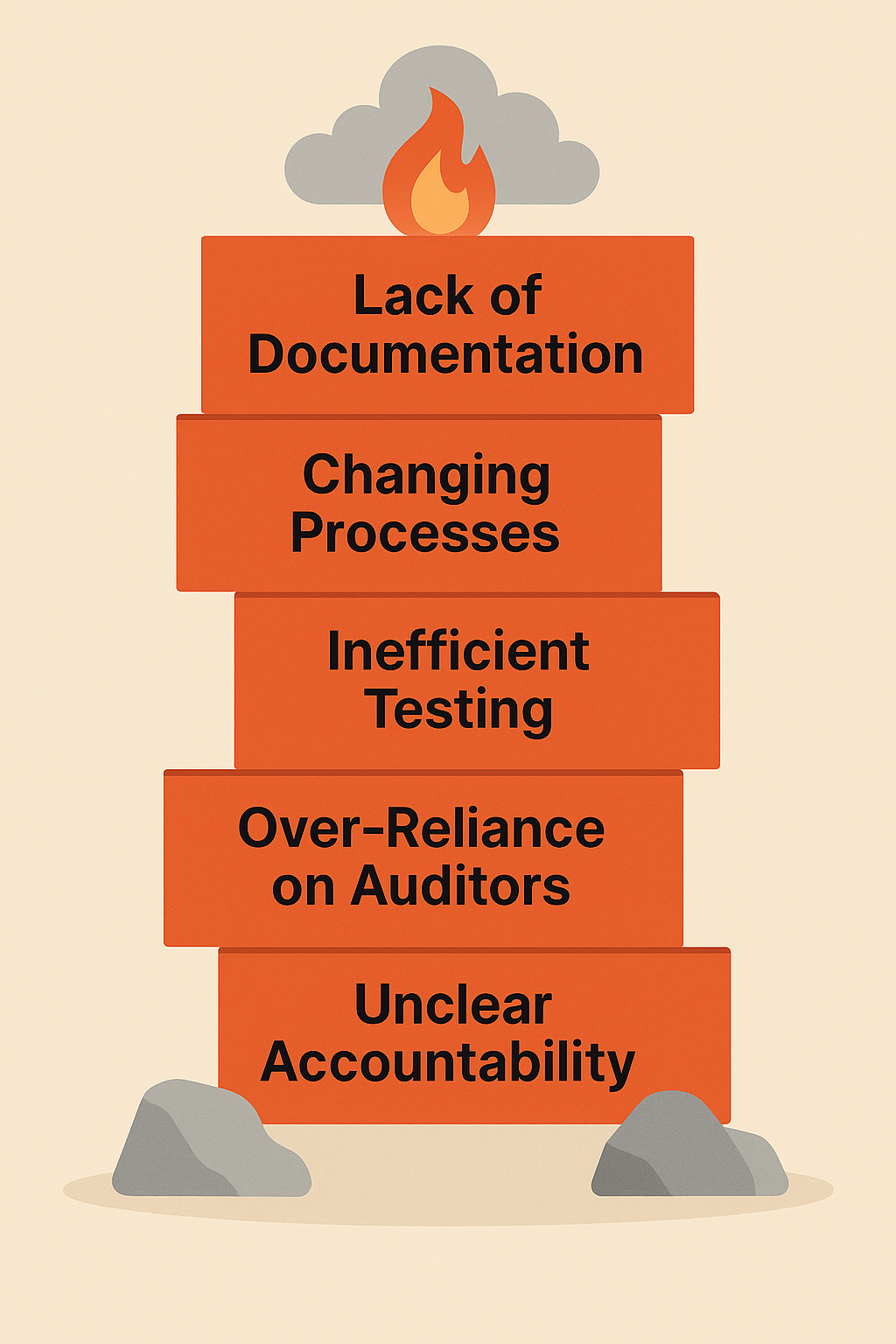
Despite having the best intentions, many organizations find it difficult to have SOX testing procedures conducted effectively, reliably, and in line with business requirements. Some pitfalls that teams encounter during a SOX test include:
Lack of Documentation
Without proper and up-to-date documentation of control descriptions, process flows, and risk-control matrices, it is difficult to confirm that a control is adequately designed and functioning as intended. You waste more time attempting to figure out what was supposed to happen than actually testing it.
2. Altering Processes
As your company expands, so do your reconciliation workflows and tools. But if controls aren't refreshed to keep up with those changes, you're left testing obsolete processes, missing the actual risks that require attention today.
3. Inefficient Testing
Still stuck in spreadsheets and emails? Manual reconciliation and testing can bog you down and make it too easy to miss mistakes. Without an efficient process, it's challenging to keep track of what has been done, what remains outstanding, and what needs attention.
{{banner2}}
4. Over-Reliance on External Auditors
External auditors are valuable, sure. However, if they're performing most of your testing's heavy lifting, you're paying more than you have to and missing out on building your internal SOX control.
5. Unclear Accountability
If nobody knows who's responsible for a control, things fall through the cracks. For example, if no one’s assigned to test revenue recognition controls, errors may go undetected.
SOX Testing Best Practices
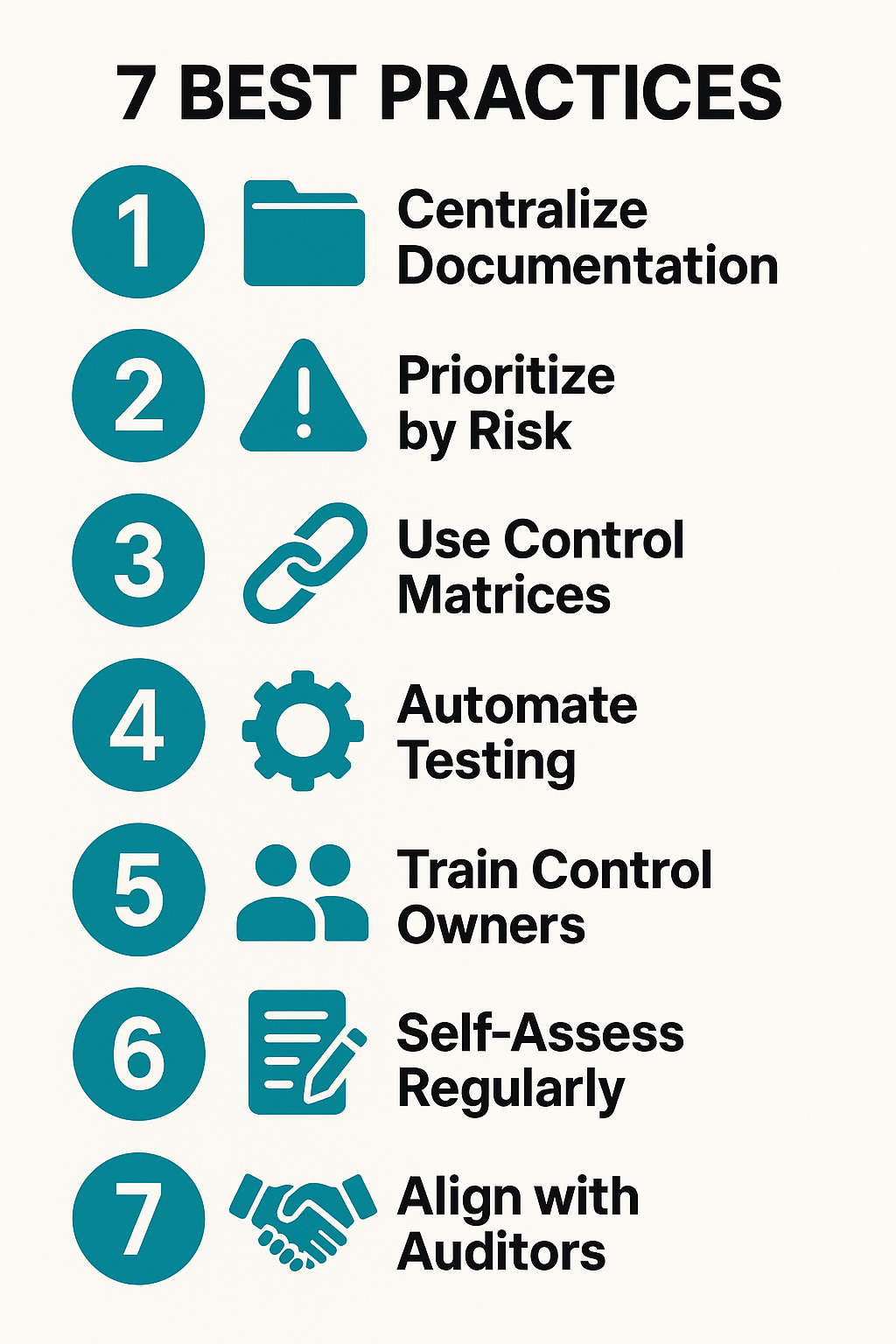
To make the SOX testing process more effective and business objectives-driven, some established best practices include:
1. Centralized Documentation
Maintain your SOX control testing documentation and results within one system or repository. It is time-saving, avoids confusion, and enables everyone to work on the same information.
2. Adopt a Risk-Based Approach
Not all controls are equal. Focus your testing efforts on high-risk areas, so you're directing your time where it matters most.
3. Apply Control Matrices
Mapping risks to controls (and correlating those to financial claims) ensures that nothing falls through the cracks. It's an excellent way to get the macro view and spot any holes.
4. Automate Where Possible
Automate evidence gathering, test workflows, or reminders. It keeps human error to a minimum and frees up your team's time to work on the things that do require human judgment.
5. Train Control Owners
Ensure your control owners understand precisely what they're accountable for, particularly when roles change. Minimal training beforehand will save a great deal of confusion down the line.
6. Conduct Periodic Self-Assessment
Ask departments to perform routine self-testing. Not only does it identify problems earlier, but it also creates more control and ownership within individual teams.
7. Talk Early with Auditors
Get in sync with your internal and external auditors early in the year. When you are both on the same page, you can eliminate redundant testing efforts or surprising gaps.
{{banner1.1}}
Making SOX Testing Scalable and Efficient
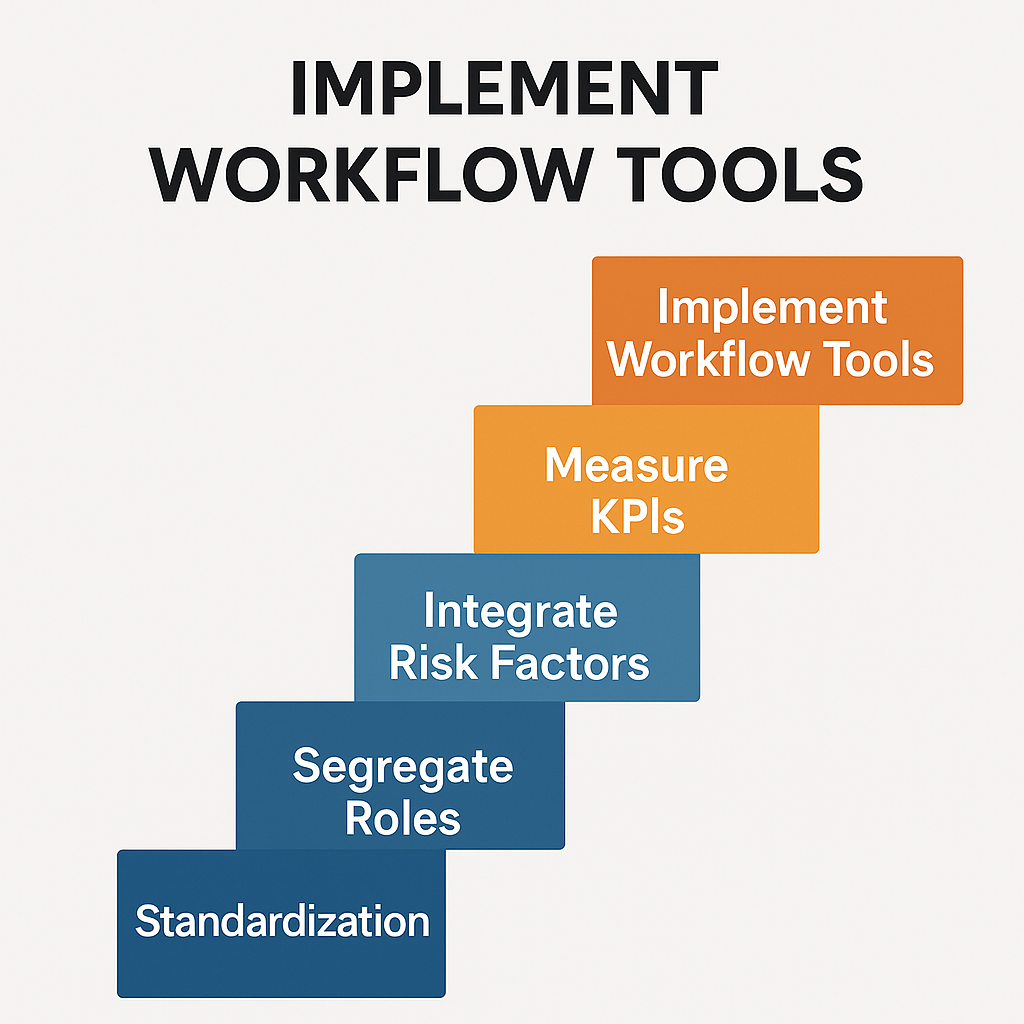
As businesses grow, so do the complexities of compliance. Here's how to maintain SOX compliance testing under control:
1 Standardize Control Language
Develop templates and standard definitions for control descriptions and test procedures to ensure consistency and accuracy.
2. Segregate Roles
Define roles clearly between process owners, testers, reviewers, and approvers to avoid conflict of interest.
3. Integrate With Other Risk Functions
Associate SOX testing audit with other compliance functions, such as IT security or enterprise risk management, to develop synergies.
4. Measure KPIs
Monitor measures such as the number of SOX control testing, failure percentages, remediation cycles, and hours consumed to compare year-over-year results better.
5. Implement Workflow Tools
Platforms for automating reminders, testing, approvals, and reporting can significantly lower cycle times.
How Osfin Simplifies SOX Testing & Reconciliation?
SOX compliance testing is not always synonymous with endless late-night spreadsheets. Osfin is a platform specifically designed to simplify SOX testing, via accelerated and dependable reconciliation for finance and compliance teams.
Here’s how Osfin makes you audit-ready without the inconvenience:
1. Automated Reconciliation at Scale
Osfin reconciles 30 million records in 15 minutes, detecting mismatches, tags them, and directs them to correct teams, keeping it accurate, a vital SOX compliance testing mandate.
2. Streamlined Control Testing Workflows
Task out testing, set reminders, and watch in real time. All stays organized, in sight, and on schedule.
3. Intensive Reconciliation Dashboards
Get a clear view of how your controls are performing. Identify mismatches and possible breakdowns before they become audit risks.
4. Audit-Ready Exports
Need to report results? Export all test data, supporting documentation, and notes with a single click, exactly as auditors want it.
And more features that keep you ahead:
- 170+ Pre-Built Connectors: Link to banks, ERPs, processors, and APIs instantly—no delays or dev work.
- Advanced Matching Logic: Easily manages one-to-many, partial, and currency-adjusted matches.
- No-Code Rule Builder: Tailor workflows, matching rules, and escalations—no engineers required.
- Enterprise-Grade Security: 256-bit SSL encryption, role-based access, 2FA, and complete compliance with SOC 2, ISO 27001, PCI DSS, and GDPR.
- Fast, Low-IT Setup: Onboard in days without custom development or waiting months.
- End-to-End Support: Expert assistance available through onboarding, scale, and resolution.
With cleaner data, quicker reconciliations, and transparent views of exceptions, Osfin takes the heavy lifting out of compliance.
{{banner3}}
FAQs on SOX Testing
1. What is SOX testing?
The SOX testing definition includes verifying if internal financial controls align with the Sarbanes-Oxley Act, providing proper reporting, risk management, and accountability for public companies.
2. How to do SOX testing?
Begin with risk assessment, followed by testing control design and operation, recording findings, and closing gaps, usually through automatic processes, depending on the type of controls.
3. Who conducts SOX testing?
The internal audit staff, compliance departments, or external consultants typically conduct the SOX test. The control owners execute the controls but not the testing.
4. How frequently should SOX testing be conducted?
Testing is typically conducted annually, but high-risk or automated controls may be tested more frequently, mainly if process or system changes occur.
